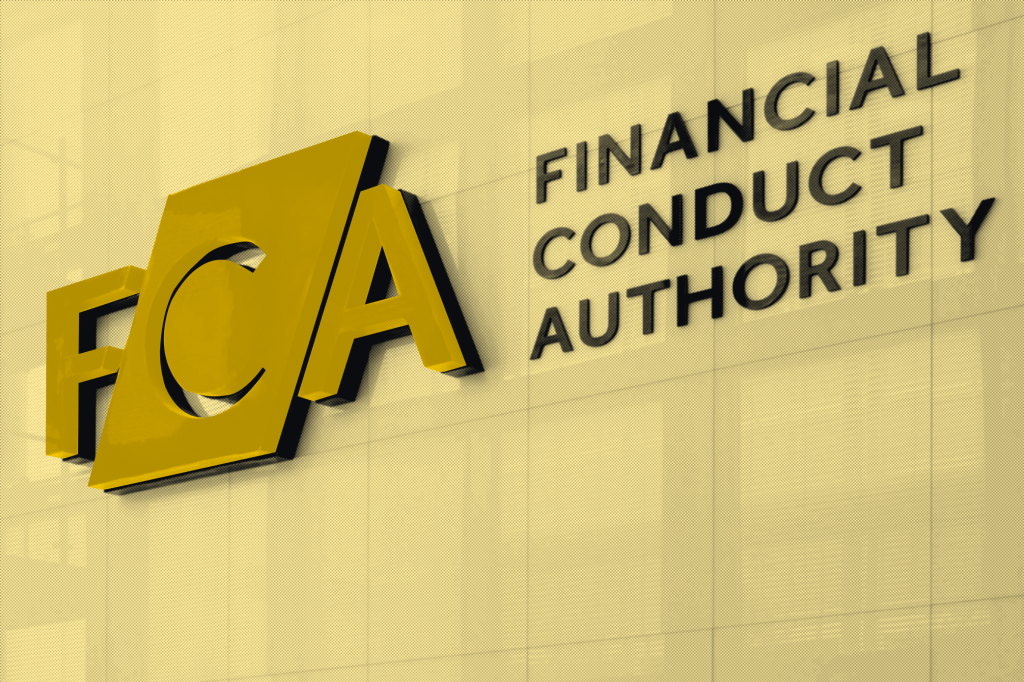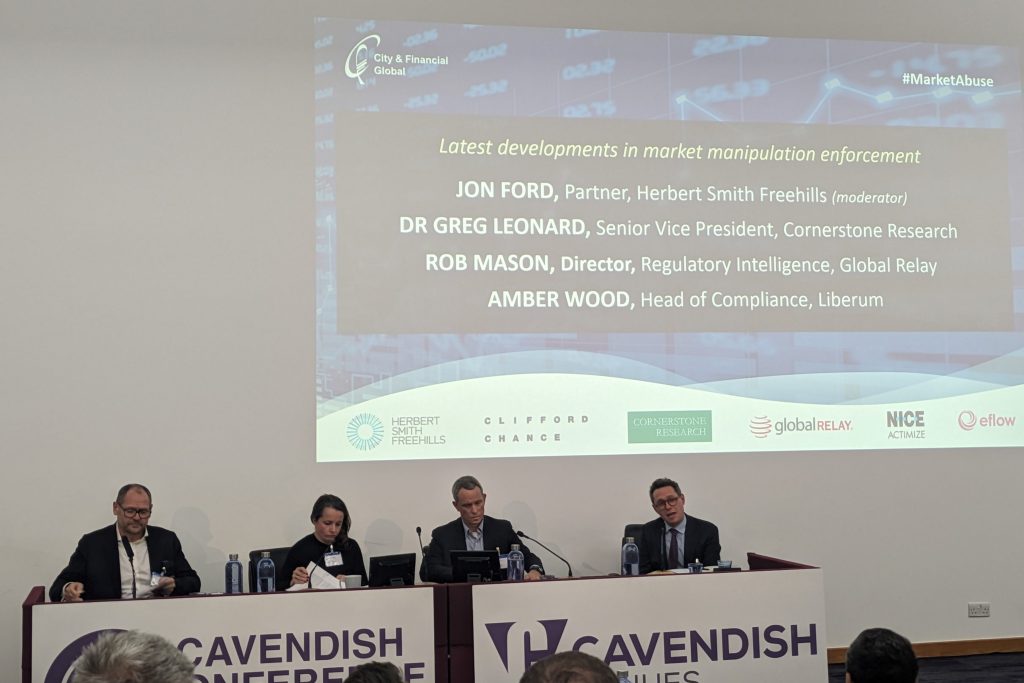The panel was moderated by Jon Ford, partner, Herbert Smith Freehills with panellists:
- Dr Greg Leonard, senior vice president, Cornerstone Research;
- Amber Wood, head of compliance, Liberum;
- and Rob Mason, director, regulatory intelligence, Global Relay.
The discussion covered important market manipulation cases, recent FCA Market Watches
Register for free to keep reading
To continue reading this article and unlock full access to GRIP, register now. You’ll enjoy free access to all content until our subscription service launches in early 2026.
- Unlimited access to industry insights
- Stay on top of key rules and regulatory changes with our Rules Navigator
- Ad-free experience with no distractions
- Regular podcasts from trusted external experts
- Fresh compliance and regulatory content every day

















